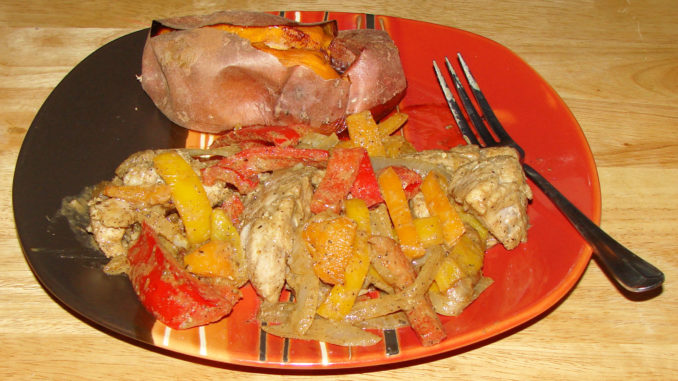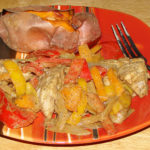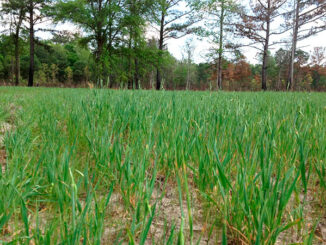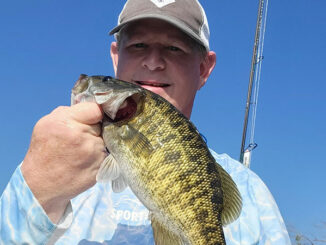
MOJO FireDisc grouper cheeks make a fine meal
The odd weather that has been prevalent in the Carolinas this year has continued into the fall. After rain and heat through the summer, Hurricane Florence backed into the east coast and wreaked havoc from Cedar Island, N.C. to Cape Romain, S.C.
There are areas where inshore fish bit immediately after the storm passed, and fall is a also a great time for inland fishing and hunting, so sportsmen have many options for fresh game and fish on their tables. However, fall is typically a time for calm ocean waters, allowing fishermen easy trip to the edge of the Continental Shelf where big grouper live. They are the target here, not because of their body meat, which is excellent, but because this recipe uses their cheeks, and larger grouper have larger cheeks.
Grouper are generally considered a prime offshore bottomfish for the dinner table. However, there are parts of grouper that are discarded during the cleaning process that excellent table fare. The cheeks are at the top of this list for many fishermen. They really are tender and delicious.
The cheeks are just what you would think: pockets of meat just below the eye and above the mouth. Many fishermen compare them to scallops more often than to the grouper’s body meat. They definitely have a different texture than the rest of the grouper, and all grouper have them.
The cheeks aren’t particularly large on a barely legal grouper, but they are there. Locate the bone pocket under the eye and use a sharp fillet knife in a circular motion to scoop them out. They will be about the size of a tablespoon on smaller grouper and almost the size of a ladle on large grouper. All are excellent, it just takes more of the smaller ones to make a meal.
MOJO FireDisc grouper cheeks
This might be the simplest recipe ever featured in 16 years of this column. Don’t take that as a bad thing, as I also believe it is excellent. It’s just so simple I kept overlooking it.
Several weeks ago, I was visiting one of my favorite fishmongers and saw a package of grouper cheeks buried in the ice. I really like grouper cheeks, so I bought them. I invited one of the neighbors over, and she asked if this would be a recipe for the column; she was all in favor or it. I won’t include her name on the possibility someone might not like this, but my neighbor gets the credit for having it included or the blame if you don’t like it.
Regular readers know I like Mojo marinade. There are several, and all are good, but the one I prefer is Goya Mojo Criollo, the Cuban version of mojo sauce, loosely translated as garlic sauce. I can taste the garlic but don’t find it to be strong, and I believe the orange and lemon juices are the real secret. They penetrate the meat to keep it moist and tender while cooking.
My introduction to fish cheeks was about 25 years ago at Camp Opportunity in Ohio, a deer-hunting camp that Capt. Ottie Snyder managed for Horton Crossbows. Snyder was a walleye guide on Lake Erie during the season and managed Camp Opportunity during the winter. He would save walleye cheeks all summer and bring them to the camp for special treats for hunters.
His favorite way to prepare walleye cheeks was to sauté them in a little olive oil with peppers and onions. They were excellent, and I headed home with them high on my priority list.
I haven’t tried any fish cheeks that weren’t good, but grouper cheeks have become my favorite. Some larger cheeks must be cut several times to pare them down to bite-sized pieces. Cook them whole and then cut them.
I used bell peppers and sweet onions as vegetables. I often add fresh mushrooms and have added green beans, jalapeno and poblano peppers, several nuts and more. Don’t be afraid. If you like a vegetable that won’t fall apart in a stir fry, give it a try.
I believe this recipe would be good with just the Mojo marinade, but I add a little pepper to the vegetables before marinating. Some folks will also add salt, but the marinade adds plenty for me. Don’t get lazy and marinate the vegetables as long as the cheeks. It tends to wilt them a little; they don’t taste the same.
I suggest marinating the cheeks several hours but have left them all day with no adverse effects. Don’t overcook the cheeks. They are naturally tender, but can get chewy if overcooked.
I prepared this meal outside on my FireDisc Cooker. It does a good job, and I can pour some Mojo marinade in the pan to help season while cooking and not have concerns that my exhaust fan can handle the steam. A conventional wok or cast-iron pan will work, just not as well.
INGREDIENTS:
1 pound of grouper cheeks
1 package of mixed color bell peppers or 1 each red, yellow and orange bell peppers
1/2 sweet onion
Goya Mojo Criollo marinade
Salt and pepper
Buttery flavor non-stick cooking spray
PREPARATION:
Put grouper cheeks in container and cover with Mojo Criollo marinade. Allow to marinate for at least 2 hours. All day is not too much as long as marinate and cheeks are kept cold. Slice peppers and onions. Lightly sprinkle coarse, ground black pepper on peppers and onions. Put the peppers and onions in Zip-Lock bag, squeeze the air out and cover with Mojo Criollo marinade. Only allow the vegetables to marinate approximately 30 minutes.
Spray the FireDisc pan with buttery flavor cooking spray, covering until it beads (fairly heavy). Preheat FireDisc to medium heat. Add vegetables and Mojo Criollo marinate to FireDisc pan. Stir often and cook until peppers and onions show a slight dark scaling. The liquid will steam and evaporate.
Move the peppers and onions to the outer edge of the pan to keep them warm, but not cooking further. Remove the grouper cheeks from the Mojo Criollo marinade and place in center of FireDisc. Let them sear about 30 seconds to a minute. Add the Mojo Criollo marinade from the marinating container until it almost covers the grouper cheeks. Cook this, stirring frequently.
The Mojo Criollo marinade will steam and evaporate. The grouper cheeks may be done just before all is gone, but certainly just after. Be careful not to overcook the grouper cheeks. A very light browning of the edges or one side is OK, but not darker. This will take approximately 6 to 10 minutes, depending on the number of cheeks and amount of marinade.
I like to serve grouper cheeks with simple sides. A green salad or lettuce wedge is great to start, and a baked sweet potato is an excellent side. Some folks might prefer a regular baked potato, and corn on the cob also goes well. If you would like dessert, use something light. Pudding is good, or you can serve flan to stay with the Latin Mojo taste.







